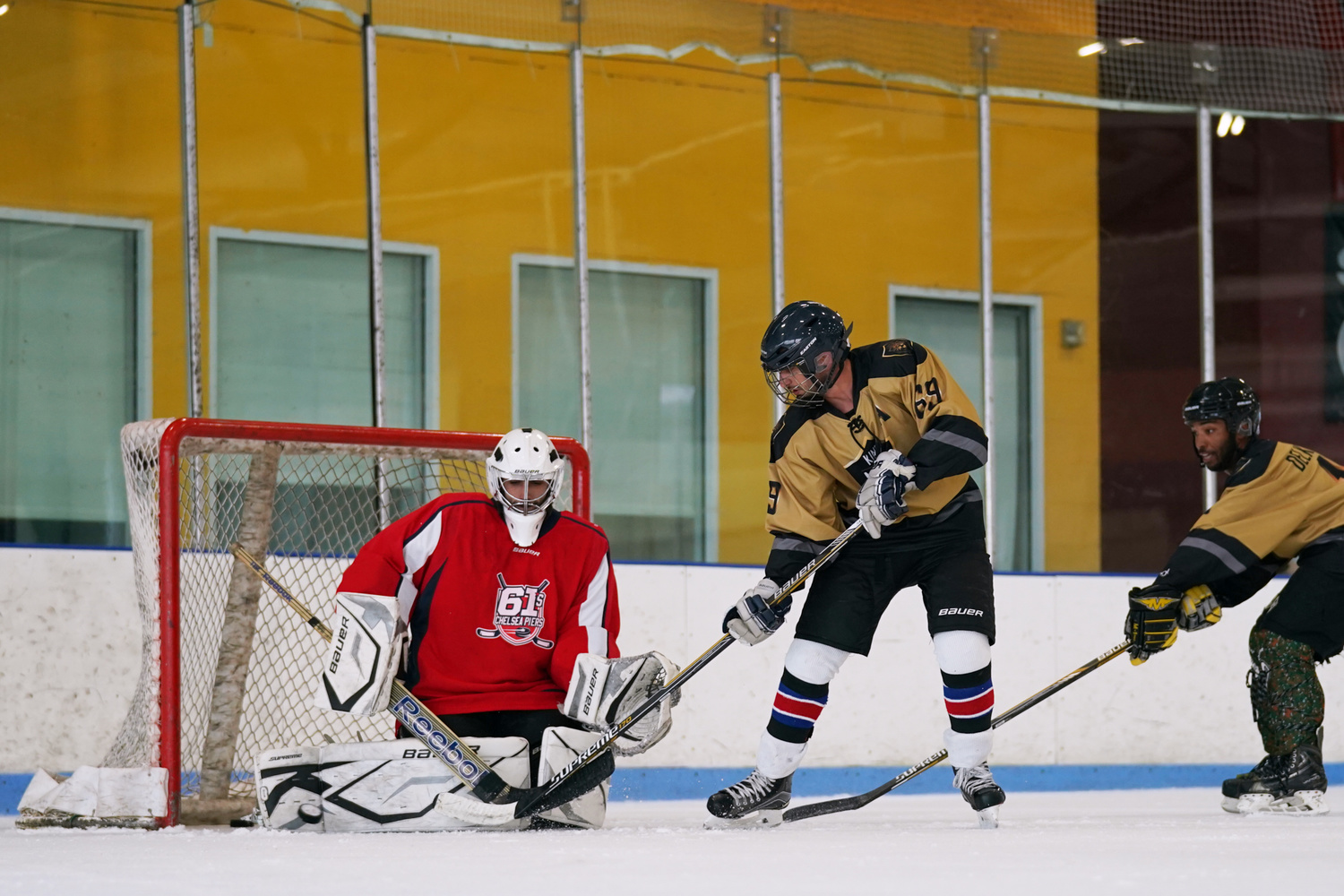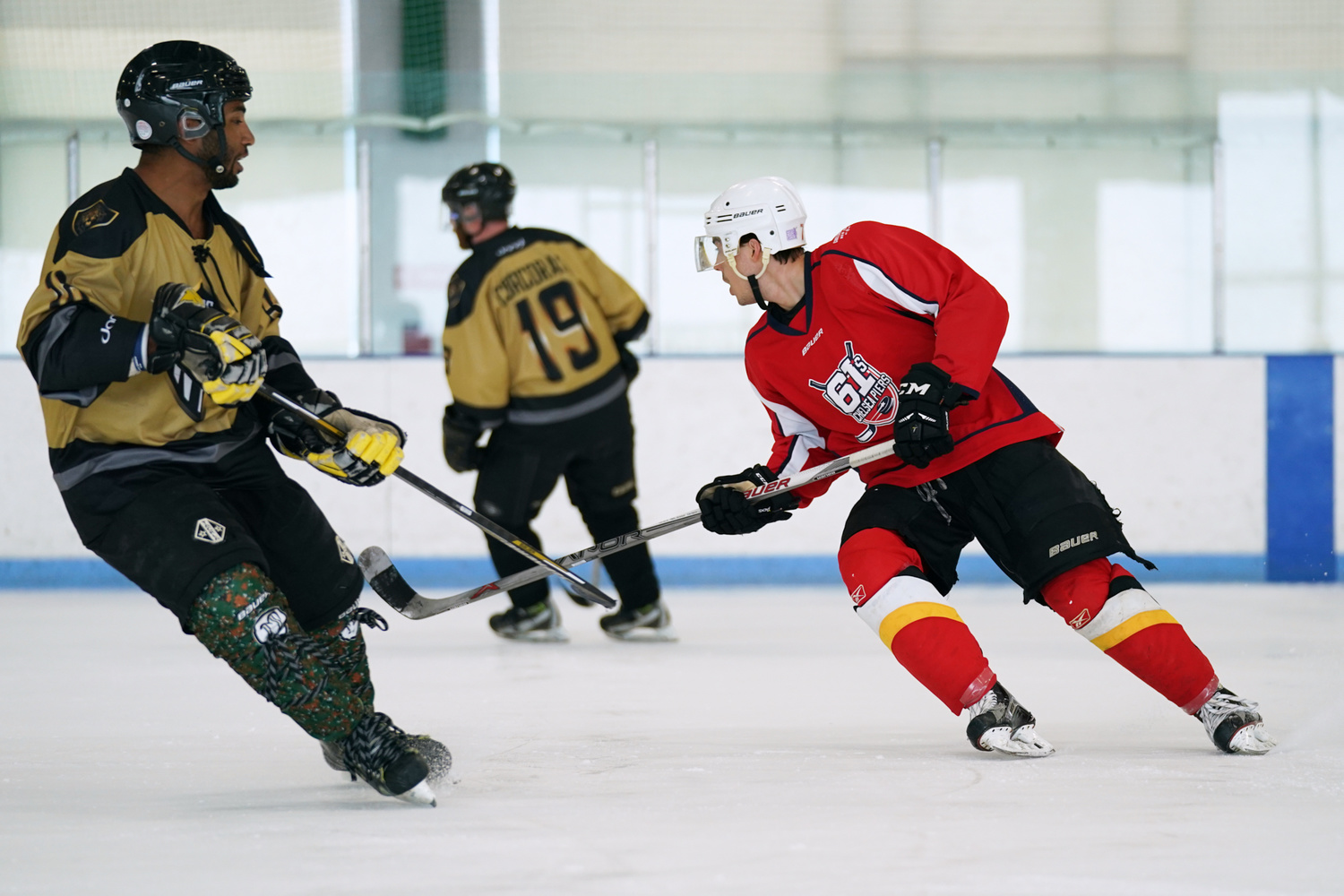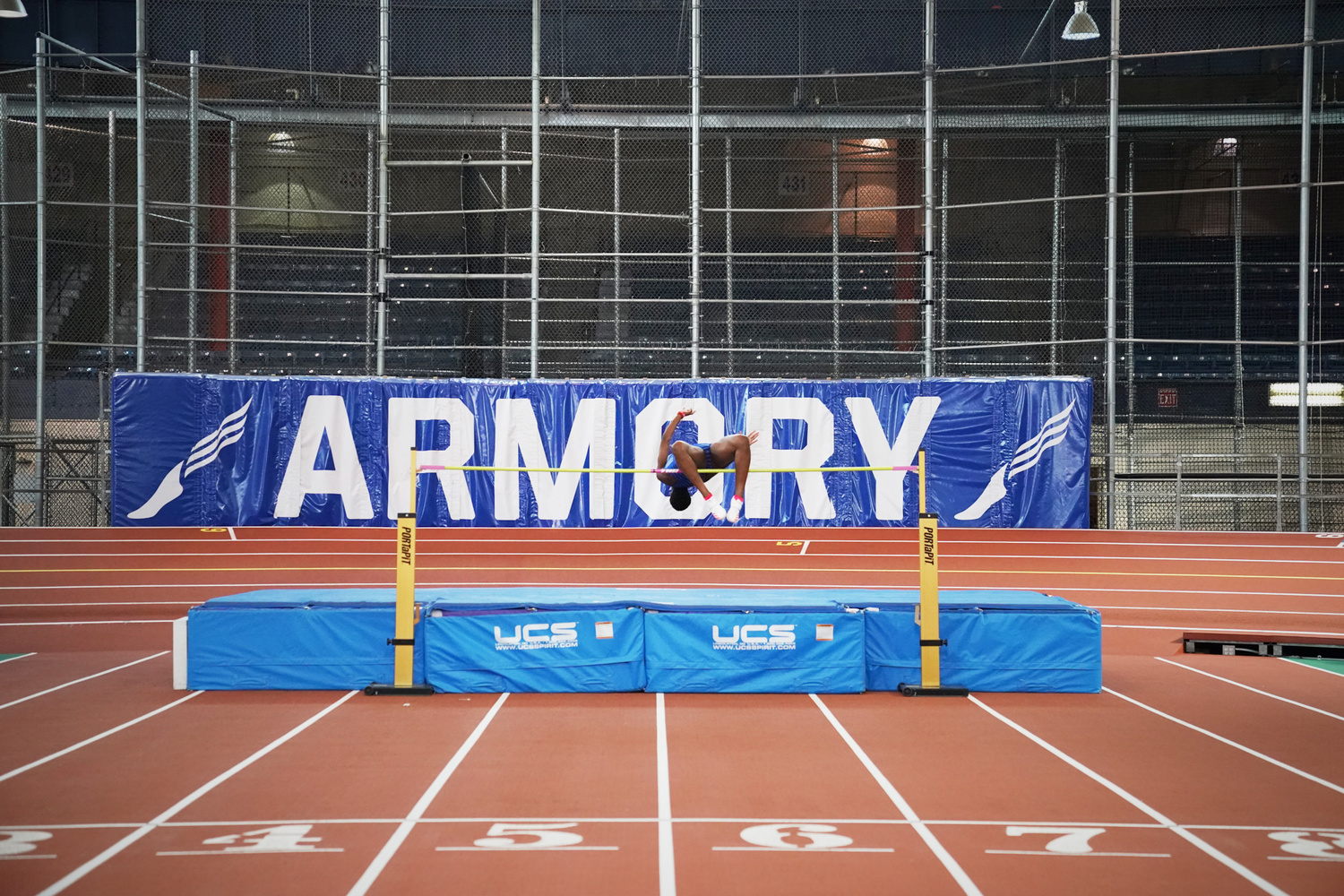Last week Sony unveiled their most ambitious Alpha camera to date with the a9. The 24.2-megapixel mirrorless camera takes on the general form factor of previous a7 II bodies and packs in their latest photo technology with a strong emphasis on autofocus, speed, and removing distractions such as shutter noise and screen blackout in continuous shooting. This all adds up to a product that has the potential to make a large impact on the sports photography scene. Today I'm excited to share a number of images I shot with the Sony a9 of a range of track and field events plus hockey and ice skating.
After I first tried out the a9, I wrote an article about my five favorite features of the new Alpha camera. Since that was written, I got to spend another full day of shooting with it in New York at a couple Sony-hosted sports arenas and would like to add some more first-look observations here.
Autofocus
Right away when I first picked up the Sony a9 I could see that the autofocus was really special. There are 693 phase-detection autofocus points spread throughout 93 percent of the image area. What that means in practice is that I was able to track subjects moving all throughout the frame without losing them. I could frame up a shot with the composition I wanted, and then as soon as the subject began to enter the frame I could press the AF-On button and the autofocus point would pick them up immediately and begin to track them. I found this to be very helpful in some of my sports shooting because the athletes could move around and be in a variety of different places each time in the same composition, so pre-autofocusing on one spot and waiting to hit the shutter button didn't always cut it.
In real world shooting, I did find a couple of faults with the autofocus tracking. One of which occurs when you are photographing a team sport, hockey in this case, and there are multiple people wearing the same jersey crossing behind and in front of the subject you are trying to track. As you can imagine, the tracking was fooled by these similarities and would sometimes switch which player it was following. If you kept holding the AF-On button, the correct player of interest would regain the AF tracking as the other players left the frame. However, this opens you up to missing out on some high energy shots when there are a lot of players in the frame with a lot of interesting actions going on. Talking with professional sports photographer and Sony Artisan Patrick Murphy-Racey, he recommends using center-AF area for team sports and activating the back button AF-On in short bursts for the most accurate results.
Another fault with the a9 autofocus is that sometimes exceptionally fast subjects could not be tracked accurately. While photographing the ice skaters, as they really picked up a good amount of speed the autofocus lock would drop out on occasion. Not really a surprise, but using Eye AF dropped them even quicker.
A new addition to the Alpha mirrorless cameras is the a9's joystick control on the back of the body. It took almost no time to get used to this way of moving around the autofocus point and I found it to be a positive, quick method. Pressing the joystick in like a button returns the focus point to the center which is helpful for getting set for a new composition fast. One problem I had was accidentally nudging the joystick between shooting while holding the camera down at your side. I'd sometimes raise my camera up to take a shot, only to realize a little too late that my focus point had shifted to the very corner. Again, just a press will get it back to center, but sometimes it was too late. Over time I can see myself becoming more aware of this and more careful not to nudge it.
Image Quality
The image quality is a little messy to judge with the a9 at the moment. Having shot with every a7 and a6000-series camera, I would say the a9 falls a little behind the a7R II in terms of dynamic range and color. However, the way I tested the a9 was far more aggressive than how I have typically shot with the a7R II. As a sports photographer camera, the a9 is going to be regularly firing off at higher ISOs to keep shutter speeds as high as possible, and for that reason it makes sense that the image quality suffered in those areas.
Speaking of ISO, the a9 handles high ISOs in an interesting way. As the ISO increases, fine details start to become flat out eliminated from the image, however the color and higher contrast edges remain. The higher the ISO, the broader the detail it would begin to take away. Notice in the comparison below how the text of the sign and the rivets in the wall just disappear, but at the same time the high contrasted edge of the red wall against the white remains to be a clear, relatively sharp line. What this meant for my images from the a9 was that facial details of athletes began to lose feature at high ISOs, however their body gestures and surroundings kept a lot of their sharpness rather than an equal degradation of everything.
Click below for full-resolution images shot on the a9 from ISO 50 all the way up to 204,800 so you can compare the camera's JPEGs as you please.
Download Sony a9 ISO Test Images
Performance
Let's begin with the battery since I'm reading a lot of confusion in this area. Sony has rated the a9 with a battery life of 480 shots when using the viewfinder, and 650 shots when using the LCD monitor. These numbers reflect shooting single frame still images, and does not take into consideration continuous shooting. Yes, you can shoot the 241 continuous raw frames twice and still have fresh batteries. In my day of shooting, my final total was 2,805 images shot (1,639 of them were a combined raw+JPEG — I became worried about filling my one Sony UHS-II SD card borrowed to me so switched to JPEG-only at this time) with 30 percent battery left. Throwing in how much the camera was just on between shooting as well, the a9's new NP-FZ100 battery performs beyond my expectations.
The lack of a screen blackout while firing off 20fps in complete silence really does feel like you are shooting video to pick high-quality stills from. For this reason I also worked with the electronic shutter sound turned on because otherwise you can forget just how much you really are shooting.
The full startup time was around five seconds from flip switch to on-focus and firing. While waiting for a high jumper to get into position, I had turned off the a9 without much thought. As the athlete began to make her start towards the jump, and had a mini-panic and flipped the on switch. Just as she was about to make her jump, the camera was ready to go, autofocus was near instant, and I ended up capturing the moment.
Since I didn't have the time to dump images to a computer and keep shooting, I didn't realize just how inaccurate the brightness was in the viewfinder. I know this is obvious that LCDs are usually cranked in brightness to make photos appear better in camera, but the default setting seems a bit much even so when you compare on a calibrated monitor.
Now one last thing. Imagine shooting these 80 image bursts throughout a shooting day, and now you are sharing what you shot. The playback menu has a single frame view, a grid view, and a calendar view. The problem I have is that the grid view takes forever to scroll in and get to photos taken earlier in the day if you are doing any sort of continuous shooting. I wish Sony added in an even smaller grid view option to display more at once, or improve the performance in the playback screen so there isn't so much lag and time wasted. Also the calendar view is a bit much when you think about it. I really hope people aren't not clearing their memory cards over the course of a few days, much less months or years.
The Sony a9 costs $4,498 and is available now for preorder. It will begin arriving into hands on May 25.


























Are you are the ice for those shots? I occasionally play at and also shoot at City Ice and that is some of the dirtiest glass you could ever have to shoot through.
Haha only the bottom two images in the article I think were shot through the glass.
I don't know if it's a result of compression for viewing on the internet but they seem a bit softer than I've typically seen for such subjects at the professional level.
Hey Patrick, I'm waiting on this to be uploaded to the Fstoppers server, but if you want to check out the full size photos here they are:
EDIT: I've added the full-size photos in a download at the bottom of the article now.
Much better! :-)
I feel one of the true tests of a sports camera is how it tracks subjects using fast telephoto lenses. For instance, tracking a subject with a 400mm f2.8 shot wide open where you have less than a foot or even mere inches of depth of field. It's a camera and lens combination like that that really shows how good a camera's autofocus can track. I think if Sony really wants sports photographers to make the switch, they need to start putting out the long fast glass people shooting sports are used to using. I don't think a lot of Canon and Nikon shooters would be willing to make the compromise on lenses just to have a 20fps capable camera.
I think they're trying to safely enter the market. Once they see how well the a9 is accepted by the early adapters, they can decide if it's worth making glass for it. I think even Sony has to pause at the financial commitment of simultaneously developing this camera along with one or two long, fast primes.
Great article and solid review of this body. From what you wrote, it seems like a nice leap from current-gen camera bodies. I am still baffled at 20fps, I am sure we will see more and more 'perfect moment' shots, since launch of this baby.
That being said, I am not stating that you cannot get perfect shots with fewer fps, I worked with film, that didn't even have continuous mode, only shoot, unwind, shoot, and still managed to capture images with perfect timing. But it's a great function to have, just like very high ISO, you rarely use it, but you would be glad to have it, just in case. With all those fps, it's the same. An upgrade to a tool, that does things faster etc.
Only one thing though, namely a very, very bad startup time. Most DSLRs are ready to shoot in less than 1 second [pro bodies startup is counted in milliseconds even, like D5 - about 400ms from on to AF shot], but this camera has 5 second startup time. In my opinion, that's a major downside. To argument why it is so bad, I will give one scenario, DSLR can startup very quick and just shoot, no problem here, with this one, you have to wait 5 sec, all cool, let's just leave it ON, so we wont have to wait 5s every time.And here lies the problem, while DSLRs can be on for days and days, I am confident that reviewed gear would drain the battery quite quickly if it was idle, turned on. If someone has first hand experience in this department, as in if I am wrong about the battery while idle on mirrorless, please reply, I am speculating here, not preaching anything. It's just logic tells me that my scenario would be correct.